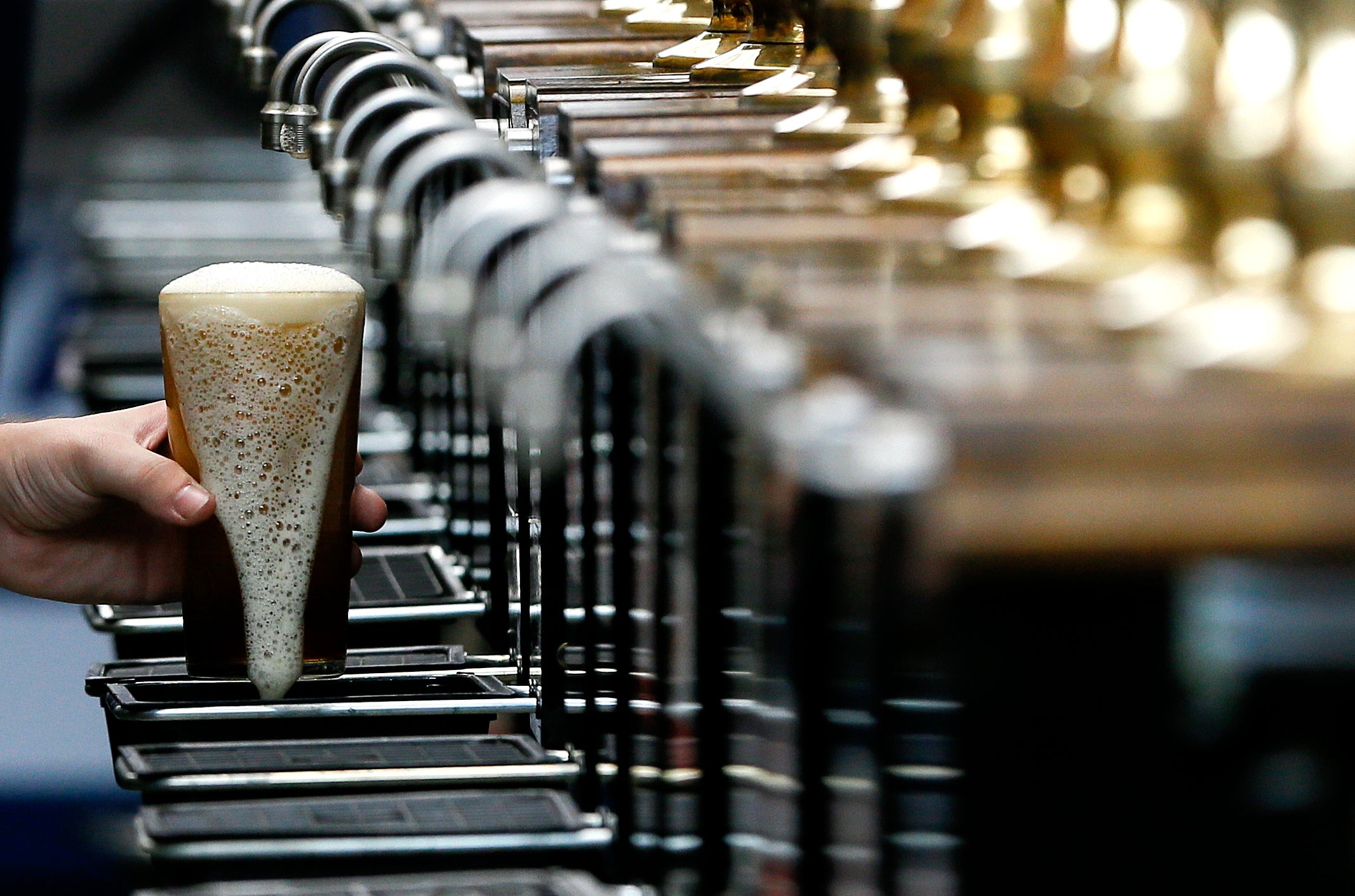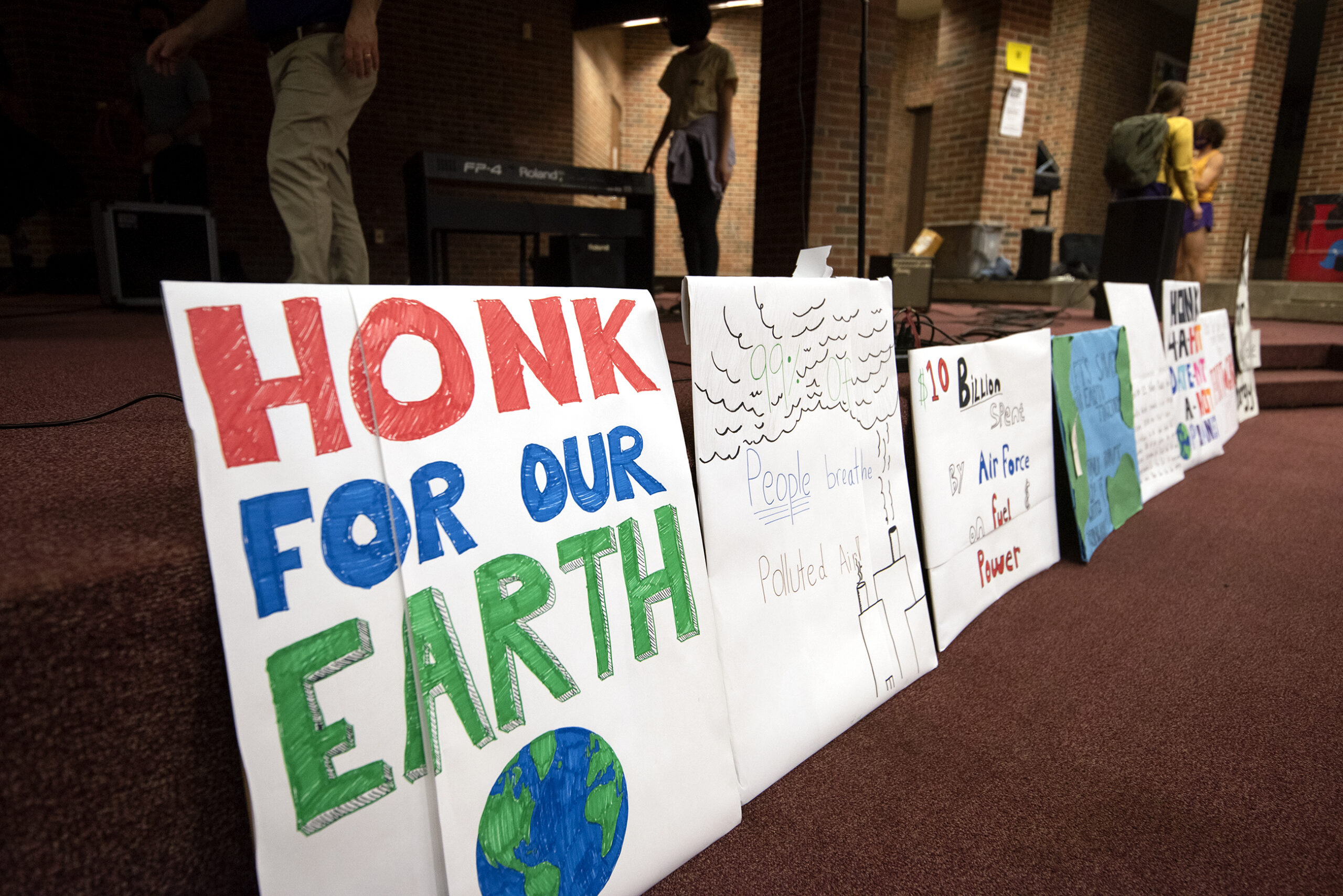Beer holds a status like little else in Wisconsin. For generations, Wisconsin has been a leader in beer production — and as palates have gravitated toward craft beers in the last decade, craft breweries have exploded in number. Craft breweries across the state have satisfied a desire for local products and community connection, but as climate change becomes a growing threat to a stable supply chain, their size leaves them more vulnerable than their larger counterparts. In this series, WPR is exploring how the state can adapt to and mitigate the affect climate change is having on some of Wisconsin’s most iconic foods.
Whether it’s a refreshing pilsner, a hoppy IPA or a rich stout, Wisconsinites’ love for beer is well documented.
For generations, it’s been a cultural and economic touchstone of the state, and as tastes have shifted to favor the bigger, bolder, more unique beers, small craft breweries across the state have experienced a cultural renaissance that’s rare in an era of consolidation and bigger is better attitudes.
Stay informed on the latest news
Sign up for WPR’s email newsletter.
But the industry relies on a stable supply of quality barley and hops and a generous supply of good water to brew a consistent product. As the planet becomes a warmer, more extreme place, making the same beer consumers have come to expect will likely become even more challenging.
Brewers have become more efficient in water and energy use over time, but simply put, the size of a brewery can be a key factor in whether a brewery can afford to invest in efficient equipment.
And with the increasing threat of climate change on the supply chain and additional environmental regulations likely to be looming, questions have bubbled to the surface on whether microbreweries will be able to compete with their larger counterparts.
Can The Craft Beer Renaissance Weather Climate Change?
A decade ago, Wisconsin was home to just more than 70 craft breweries.
By 2018, that number nearly tripled to 190 craft breweries that generate $2.3 billion in economic impact and more than 1 million barrels of beer each year, according to the Brewers Association.
Whether you think the craft beer market is saturated or not, there’s no denying craft breweries are changing the way Americans consume beer.
In 2012, craft breweries accounted for 6.5 percent of the overall beer market share by volume, in 2018 that share jumped to 13.2 percent.
Overall beer consumption dropped by 1 percent in 2018. While craft beer growth has slowed in the last few years, 2018 still saw sales grow by 4 percent. At the same time, the country’s best-selling beers — Bud Light, Coors Light — have experienced years of steep declines, though they still sell an enormous amount of beer.

Octopi Brewing in Waunakee, Wis. Photo by Tessa Tsaron-Blomker
Competition is strong among microbreweries, and smaller brewers have less economic leverage than their larger competitors.
When it comes to climate change and what it means for their supply chain, they’re in a tremulous spot compared to the beer giants who generally have the extra income to develop risk management strategies.
“It’s a very hard business,” said Isaac Showaki, CEO and founder of Octopi Brewing, located in Waunakee and a beverage co-packer that makes beverages that range from beer to boozy tea and hard seltzers for roughly 20 clients.
“There’s not a lot of money involved because it’s a volume business, so every time you squeeze a little more of the margin, it’s going to have a significant effect on breweries,” he said.
In an industry that already faces heavy federal regulations to make it from the farm to the pint, the possibility of even more regulations will hit small brewers the hardest, said Trey Malone, an assistant professor in the Department of Agricultural, Food and Resource Economics at Michigan State University.
Industry-wide, both small and large breweries are adopting sustainability goals to be more efficient and environmentally conscious as heat, drought and water concerns threaten their stability and bottom line, though overall progress is slow.
Molson Coors, the second-largest brewery in the United States, for example, has sustainability goals to reduce water use in their agricultural chain by 10 percent and sustainably source all of their barley by 2025.
Kim Marotta, director of sustainability at Molson Coors, said climate change has the potential to impact every part of the business, not just on the operational side, but also the regulatory side.
“How do we look at future regulation … how do we adapt our practices to meet those regulatory needs?” she said. “And really, it’s about managing long-term risk, and climate change happens to be one of those long-term risks.”
Showaki echoes those thoughts and said what is better for the environment is often good for his business.
“If I use less water, if I use less electricity, I use less steam, etc., it’s gonna be reflected on my cost, which is awesome,” he said. “That’s a good incentive for anybody to go for.”
Inside Octopi’s 50,000-square-foot facility — the fifth-largest brewery in Wisconsin — Showaki said for every piece of equipment, he could upgrade it 10 times.
Take the boiler the brewery started with. The older, more traditional model was powerful, but took up to three hours to reach the needed temperature pressure. He recently upgraded to a steam generator which can do the same in under 15 minutes.
“It uses less energy and less gas, and we can do things much faster,” Showaki said. “But there was a significant price increase.”
Wisconsin Public Radio, © Copyright 2025, Board of Regents of the University of Wisconsin System and Wisconsin Educational Communications Board.



